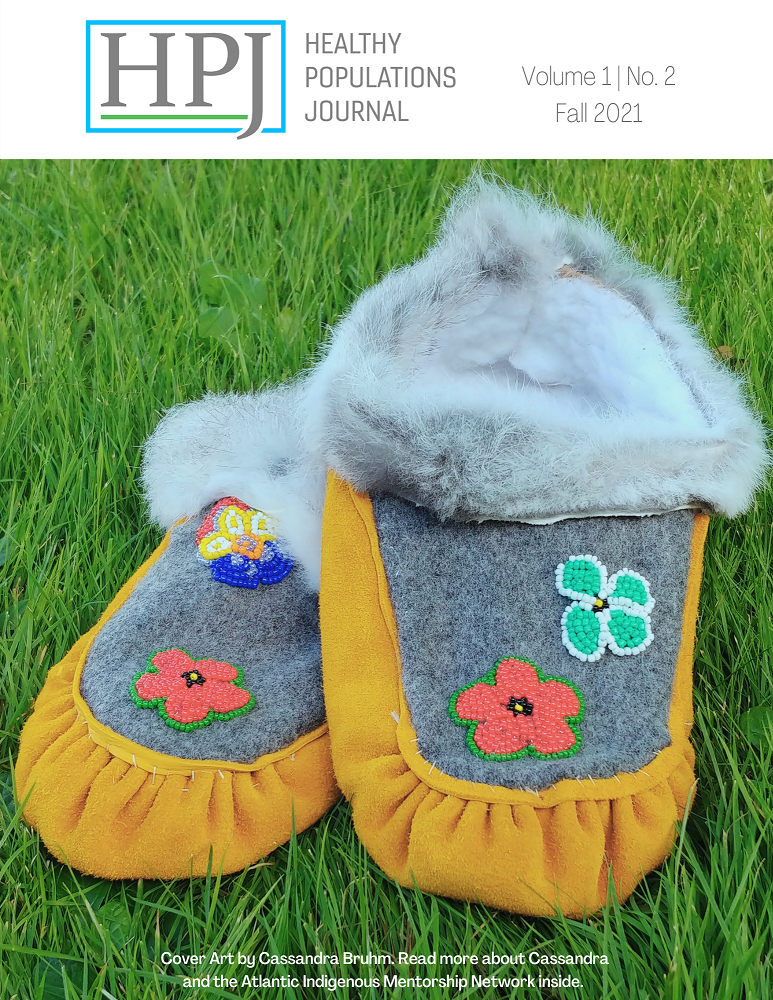Student Perspectives on Indigenous Health Content in Pre-Clinical Medical Education
DOI:
https://doi.org/10.15273/hpj.v1i2.10650Resumo
Introduction: In 2015, the Truth and Reconciliation Commission of Canada released 94 calls to action. These calls were intended to redress harms inflicted on Indigenous peoples as a result of the Indian Residential School system and to advance the process of reconciliation of Canada. Several of these calls to action are directed specifically toward educating health-care providers as a means to actively eliminate racism in health-care experiences for Indigenous peoples. Objectives: To identify the learning needs of pre-clerkship medical students with respect to Indigenous health content and curriculum, and to explore the perspectives of pre-clerkship medical students on existing gaps in the medical curriculum regarding Indigenous health. Methods: This study involved semi-structured interviews with 14 first- and second-year (pre-clinical/pre-clerkship) medical students at one medical school. Thematic analysis was performed using NVivo data management software to identify common themes, and then considered within the context of the existing literature. Results: Three main themes were identified: (a) Familiarity with Indigenous culture prior to medical school, (b) constructive criticism about Indigenous education in medical school, and (c) pervasive lack of education about Indigenous health issues in the program. Discussion: Participants felt they needed more time devoted to learning about Indigenous peoples‘ health, as there are many topics to explore. Most participants felt that their understanding of health issues impacting Indigenous peoples has not been sufficient in their primary, secondary, and post-secondary education to date and offered suggestions for improving the Indigenous health content in the medical school curriculum. These suggestions included providing the education earlier in the program, having Indigenous peoples involved in content creation and delivery, and ensuring all learners have sufficient opportunity to learn more about Indigenous peoples and their health. Conclusion: Through this research we gain a glimpse of how future medical providers are interpreting Indigenous health curriculum, and whether and how they intend to apply this education to their own future practice.
NOTE: While the term Aboriginal has been used in Canada and Australia, the term Indigenous is used in this paper as an all-encompassing term to speak of the diverse cultures and peoples who are the original inhabitants of Canada, as it is used globally (Indigenous Foundations, 2009).
Referências
Bombay, A., Matheson, K., & Anisman, H. (2014). The intergenerational effects of Indian residential schools: Implications for the concept of historical trauma. Transcultural Psychiatry, 51(3), 320–338. https://doi.org/10.1177%2F1363461513503380
Braun, V., & Clarke, V. (2006). Using thematic analysis in psychology. Qualitative Research in Psychology, 3(2), 77–101.
Braun, V., & Clarke, V. (2021). One size fits all? What counts as quality practice in (reflexive) thematic analysis? Qualitative Research in Psychology, 18(3), 328–352.
https://doi.org/10.1080/14780887.2020.1769238
Brooks, L. A., Manias, E., & Bloomer, M. J. (2019). Culturally sensitive communication in healthcare: A concept analysis. Collegian, 26(3), 383–391. https://doi.org/10.1016/j.colegn.2018.09.007
Hall, E., Chai, W., & Albrecht, J. A. (2016). A qualitative phenomenological exploration of teachers‘ experience with nutrition education. American Journal of Health Education, 47(3), 136–148. https://doi.org/10.1080/19325037.2016.1157532
HealthCareCAN (2016). Issue brief: Truth and Reconciliation Commission of Canada: Health-related recommendations. https://www.healthcarecan.ca/wp-content/themes/camyno/assets/document/IssueBriefs/2016/EN/TRCC_EN.pdf
Indigenous Foundations (2009). Terminology: So, which terms do I use? First Nations & Indigenous Studies, University of British Columbia. https://indigenousfoundations.arts.ubc.ca/terminology/
Jacklin, K., Strasser, R., & Peltier, I. (2014). From the community to the classroom: The Aboriginal health curriculum at the Northern Ontario School of Medicine. Canadian Journal of Rural Medicine, 19(4), 143–150.
Kidman, J., Yen, C.-F., & Abrams, E. (2013). Indigenous students‘ experiences of the hidden curriculum in science education: A cross-national study in New Zealand and Taiwan. International Journal of Science and Mathematics Education, 11(1), 43–64. https://doi.org/10.1007/s10763-012-9365-9
Ly, A., & Crowshoe, L. (2015). ‘Stereotypes are reality‘: Addressing stereotyping in Canadian Aboriginal medical education. Medical Education, 49(6), 612–622. https://doi.org/10.1111/medu.12725
Margolius, D., & Bodenheimer, T. (2010). Transforming primary care: From past practice to the practice of the future. Health Affairs, 29(5), 779–784. https://doi.org/10.1377/hlthaff.2010.0045
McNally, M., & Martin, D. (2017). First Nations, Inuit and Métis health: Considerations for Canadian health leaders in the wake of the Truth and Reconciliation Commission of Canada report. Healthcare Management Forum, 30(2), 117–122. https://doi.org/10.1177/0840470416680445
Pietkiewicz, I., & Smith, J. A. (2014). A practical guide to using interpretative phenomenological analysis in qualitative research psychology. Psychological Journal, 20(1), 7–14.
Statistics Canada. (2017, October 25). Aboriginal peoples in Canada: Key results from the 2016 Census. https://www150.statcan.gc.ca/n1/daily-quotidien/171025/dq171025a-eng.htm
Sylvestre, P., Castleden, H., Denis, J., Martin, D., & Bombay, A. (2019). The tools at their fingertips: How settler colonial geographies shape medical educators‘ strategies for grappling with Anti-Indigenous racism. Social Science & Medicine, 237, Article 112363. https://doi.org/10.1016/j.socscimed.2019.112363
Truth and Reconciliation Commission of Canada (2015). Truth and Reconciliation Commission of Canada: Calls to action. https://ehprnh2mwo3.exactdn.com/wp-Content/uploads/2021/01/
Calls_to_Action_English2.pdf
Williams, R. (1999). Cultural safety—what does it mean for our work practice? Australian and New Zealand Journal of Public Health, 23(2), 213–214. https://doi.org/10.1111/j.1467-842X.1999.tb01240.x
Wilson, N., Ewen, S., & Mazel, O. (2018). Medical students in Aboriginal Community Controlled Health Services: Identifying the factors involved in successful placements for staff and students. Australian Medical Student Journal, 8(2), 26–30. http://www.amsj.org/archives/6330
Yeung, S., Bombay, A., Walker, C., Denis, J., Martin, D., Sylvestre, P., & Castleden, H. (2018). Predictors of medical student interest in Indigenous health learning and clinical practice: A Canadian case study. BMC Medical Education, 18(1), Article 307. https://doi.org/10.1186/s12909-018-1401-1
Zhou, A. W., Boshart, S., Seelisch, J., Eshaghian, R., McLeod, R., Nisker, J., Richmond, C. A. M., & Howard, J. M. (2012). Efficacy of a 3-hour Aboriginal health teaching in the medical curriculum: Are we changing student knowledge and attitudes? Health Education Journal, 71(2), 180–188. https://doi.org/10.1177% 2F0017896910394544


